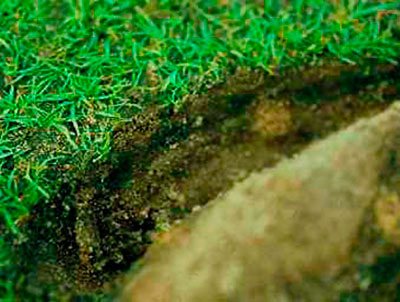 Excessive surface organic matter can lead to anaerobic conditions that encourage diseases such as black layer.
Excessive surface organic matter can lead to anaerobic conditions that encourage diseases such as black layer. Source: Frank Rossi.
Turf is a perennial plant system that increases biomass as a result of growth and management. Biomass accumulates at the surface from the development and deposition of plant parts such as leaves, stems, and roots. Aboveground plant parts such as leaves and stems are often removed and regrown as a result of frequent mowing. Underground plant parts such as stems (rhizomes) and roots cycle as living, dead, and decomposing organic matter.
The accumulation of organic matter in the top 3 to 6 inches of a turf system provides nutrient and water holding as well as cushioning and insulation. When organic matter accumulates at a rate greater than it degrades, however, it can restrict infiltration of water and gas exchange between the atmosphere and the soil air space in pores.
Excessive organic matter at the surface can become hydrophobic and increase runoff from the turf surface, which may also reduce the effectiveness of fertilizer and pesticides. Furthermore, excessive surface organic matter can promote surface rooting that interferes with the turf’s use of water and mineral nutrients, which leads to increased potential for off-site movement of chemicals applied to turf. The slideshow below illustrates the problems resulting from the accumulation of surface organic matter.
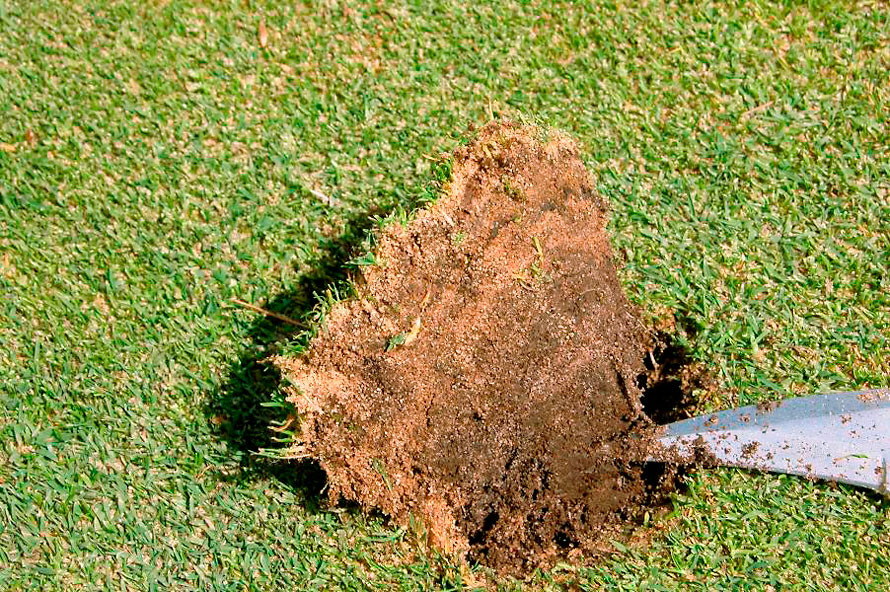 Soil layering leads to impeded drainage, increasing surface moisture that can lead to runoff. Source: Frank Rossi.
Soil layering leads to impeded drainage, increasing surface moisture that can lead to runoff. Source: Frank Rossi.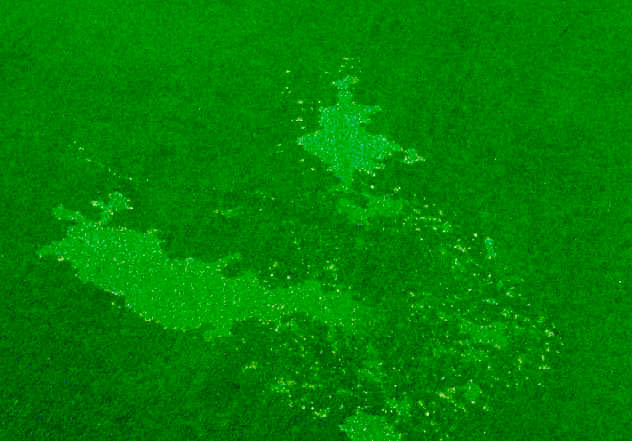
Surface organic matter accumulation results in hydrophobic conditions that can lead to increased runoff. The use of wetting agents can mitigate such problems. Source: Frank Rossi.
Factors That Increase Organic Matter
Many factors influence the accumulation of organic matter including turfgrass species, fertilization, and soil physical and chemical properties. Some turf species such as the fine leaf fescues produce significant amounts of highly lignified tissue that degrades slowly. Other species such as perennial ryegrass produce very little lignified tissue and therefore do not accumulate much surface organic matter. Grasses with high amounts of stem tissue, like rhizomes and stolons, often accumulate greater amounts of organic matter.
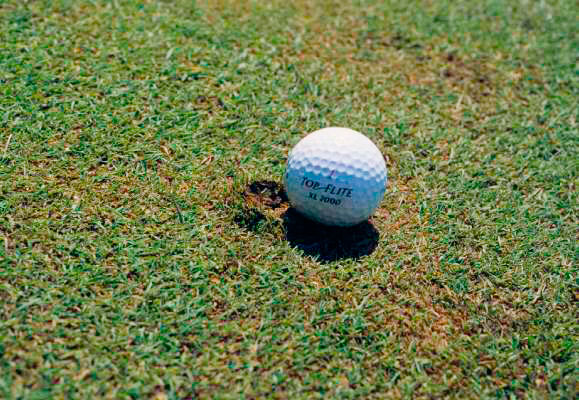
Wet surfaces lead to reduction in golf turf performance, such as plugged balls. This also increases the risk of runoff when soil surface is persistently wet. Source: Frank Rossi.
Grass Type
Creeping bentgrass and annual bluegrass are considered intermediate in their development of organic matter. They accumulate organic matter, but often that matter is not highly lignified tissue and, under warm moist soil conditions, it degrades. Still, these grasses accumulate organic matter at the surface at a rate greater than microorganisms can degrade and thus the accumulation requires dilution or mechanical removal.
Fertilization
Increase in biomass is a normal aspect of plant growth. Supplemental fertilization for functional and aesthetic purposes produces more biomass and more organic matter when compared to an unfertilized turf. The rate of decomposition also increases with supplemental fertilization, up to a point. Therefore applying enough fertilizer to meet the visual and functional requirements of the turf, but not in excess of these requirements, is critical. Excess fertilization increases biomass production that leads to excess surface organic matter production, reduced infiltration, and increased runoff.
Organic matter is a food source for macro- and microorganisms. The soil food web requires an adequate amount of organic matter and microbial activity to function properly. Degradation of organic matter is maximized in a well-aerated, moist soil with temperatures greater than 65°F. For every ten degree Celsius increase in soil temperature, microbial activity increases tenfold; this principle is referred to as the “Q10”.
Soil Management
Poorly drained soils with high bulk density and predominance of fine particles that restrict soil gas exchange reduce microbial activity. These dense, cool soils also restrict rooting to the surface, which further exacerbates the surface organic matter problem. Maintaining a permeable soil surface sustains adequate microbial activity, good deep root development, and proper infiltration. Taken together, these practices lead to a turf surface less likely to create runoff and more able to retain chemicals applied to turf top prevent leaching.
Understating soil physical properties and amending the soil to minimize the potential for compaction is the key to proper soil management. Soil modification is best performed at establishment. Additionally, hollow-tine cultivation by removing existing soil and organic matter and adding coarse textured material such as sand or compost can be effective over time. Hollow-tine cultivation that removes 0.5 inch soil cores to a 4 inch depth has been shown to influence less than 5% of the turf surface during normal operation. Equipment modifications can be made to increase that percentage to as much as 20%, however, this is a tedious and long-term process.
Additional forms of cultivation such as solid tine, needle tine, or water injection cultivation that make a hole but do not remove soil can also increase soil infiltration. The benefits of these practices are short-lived and consequently must be repeated routinely to maintain a permeable surface. Due to golf traffic, soils prone to compaction will continue to become compacted and limit infiltration without soil modification.
The slide show below illustrates soil management techniques.
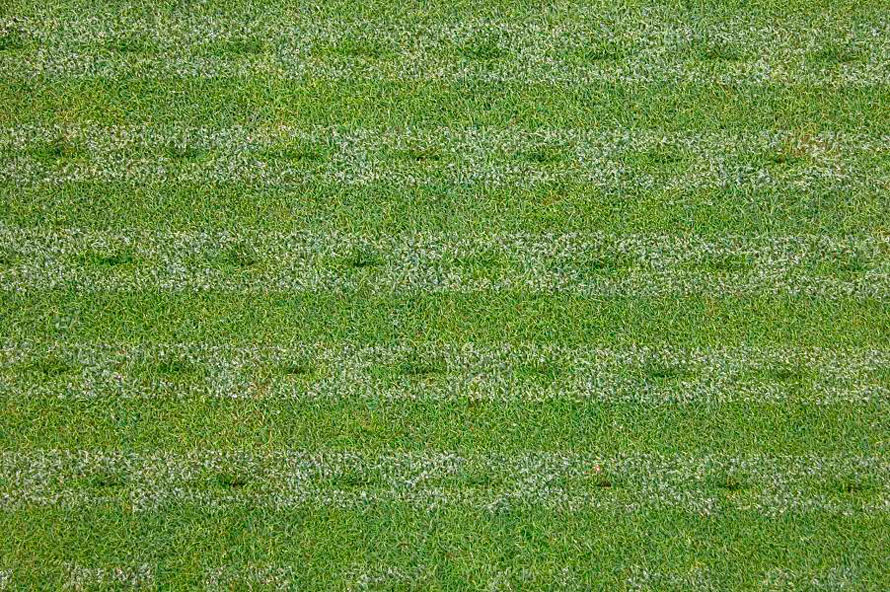
Slice holes made from a putting surface spiking operation used to maximize infiltration and gas exchange. Source: Frank Rossi.
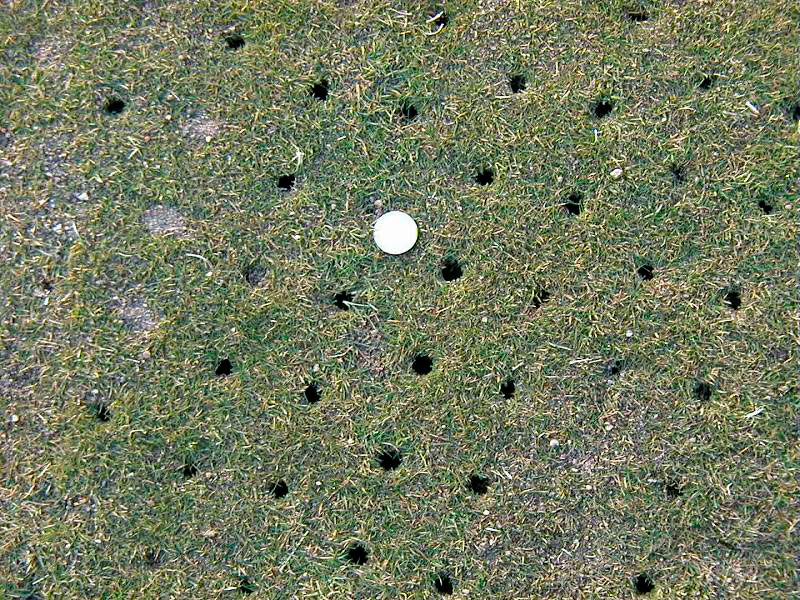
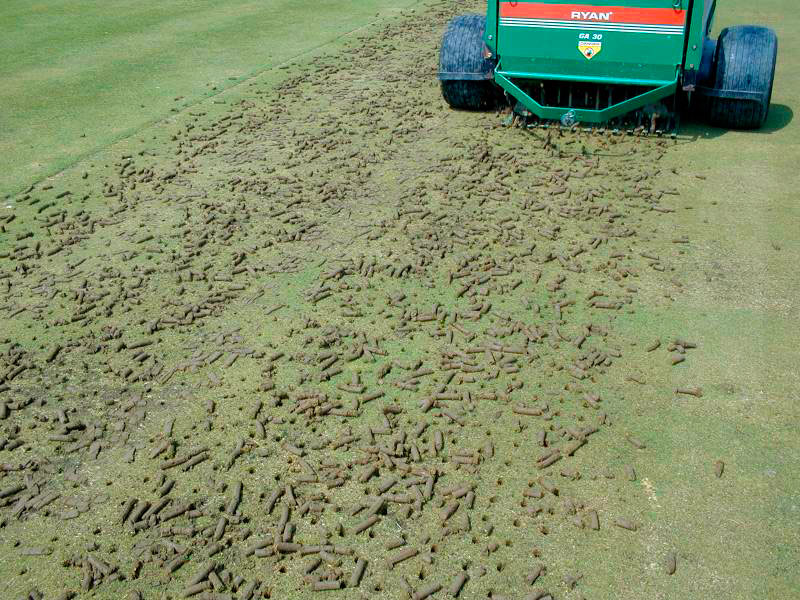
Core cultivation shown from a distance (top) and up close (bottom) is an ideal method for alleviating compaction, removing organic matter, and amending problem soils, which should increase infiltration and reduce the risk of runoff. Source: Frank Rossi.
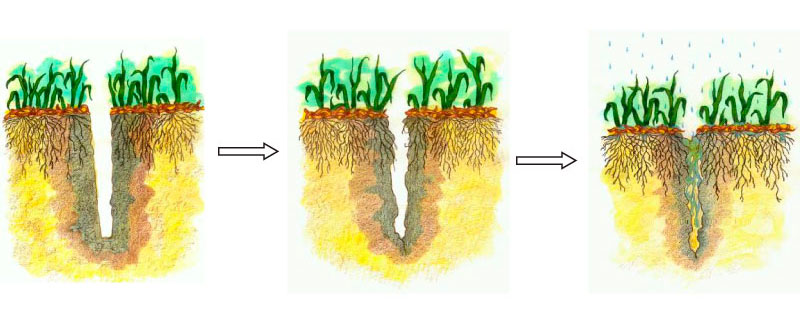
Schematic representation of core hole over time. Note hole edges are different colors depicting change in bulk density around the core. Over time the core edges collapse as water and roots begin to infiltrate the core.
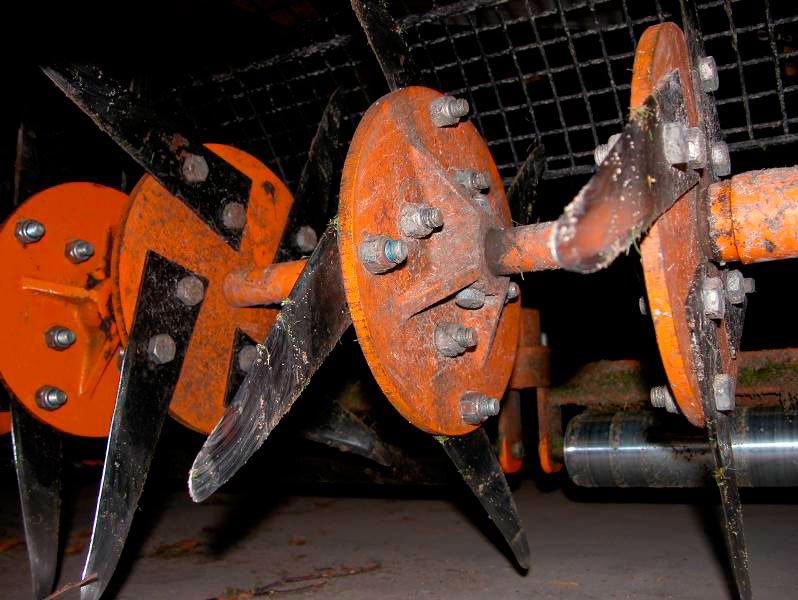
Deep slicing can aid with remediating large areas of soil in need of increased infiltration and gas exchange. Source: Frank Rossi.
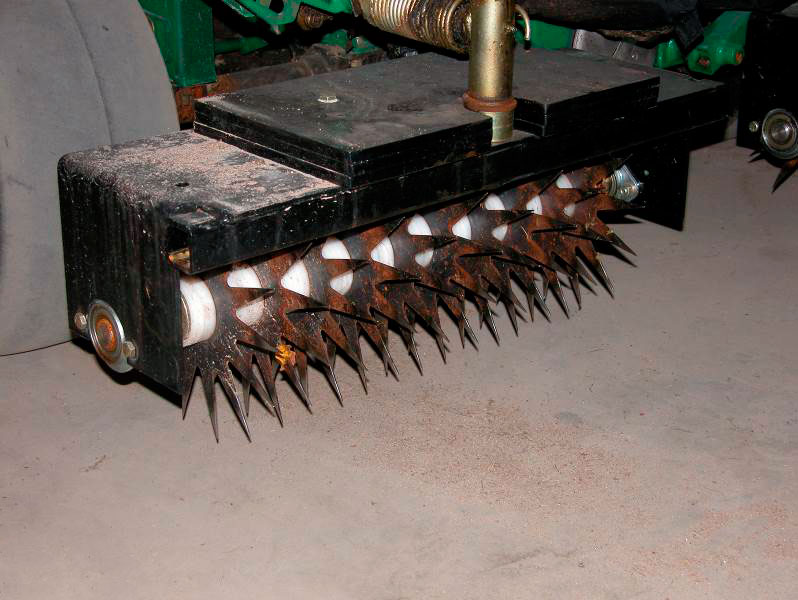
Spiking attachments aid with increasing infiltration and can affect significant amounts of surface areas. Source: Frank Rossi.
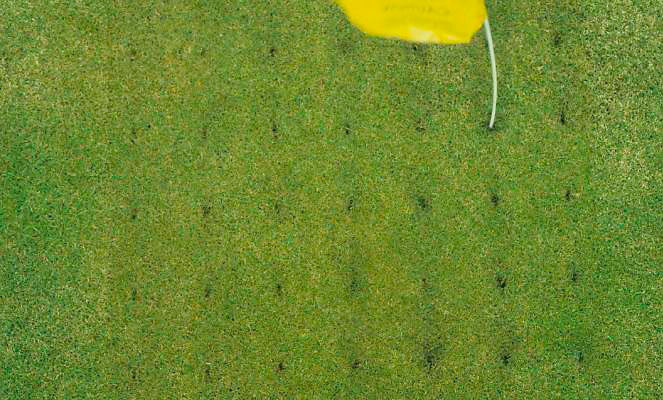
Less invasive cultivation methods such as water injection significantly increases infiltration and gas exchange. Source: Frank Rossi.
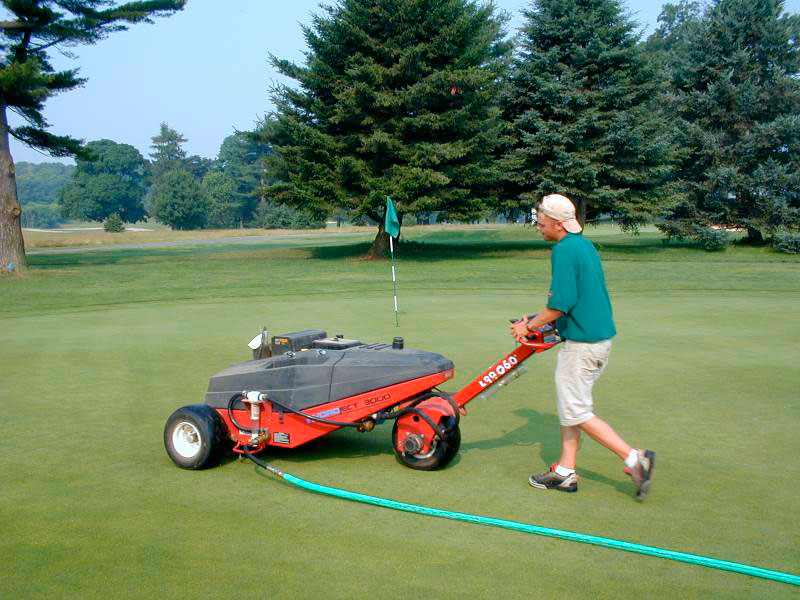
Water injection cultivation is the ‘gold standard’ for increasing infiltration and improved gas exchange with minimal surface disruption. Source: Frank Rossi.
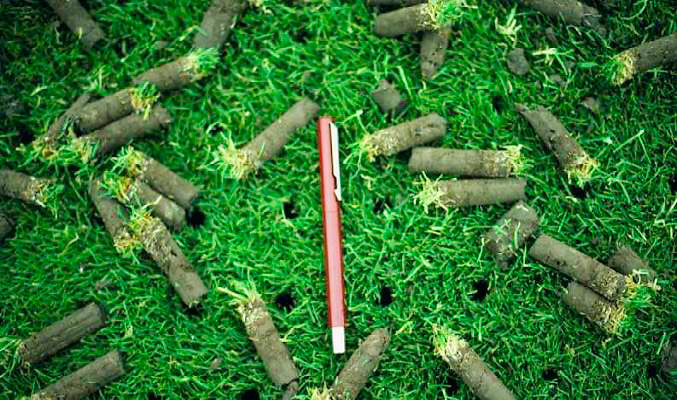
Hollow tine cultivation is an ideal method for amending soils. Source: Frank Rossi.
Soil Modification With Topdressing
Managing surface organic matter is best accomplished by prevention through proper fertilization and soil management. Many common golf turf grasses, however, under routine maintenance and adequate prevention still produce organic matter that requires some level of management. The most effective means of managing surface organic matter is through regular applications of sand or soil via topdressing. A light (0.1 to 0.2 inches) application of material applied and integrated into the surface of the turf dilutes the organic matter and creates a physical matrix that functions as a soil.
Topdressing is often performed in conjunction with some form of cultivation that either removes a core or makes a hole. The cultivation can not only provide minor removal of the surface material but also create space for topdressing to serve the purpose of dilution and creation of a pseudo-soil matrix.
Recent research suggests that under normal golf turf management, creeping bentgrass putting surfaces require between 18 and 22 cubic feet of sand per 1000 square feet per year to properly dilute surface organic matter. This application requires topdressing as frequently as every 5 days without any cultivation, to as many as 14 to 21 days with more routine cultivation. Ultimately, the goal of proper dilution is to ensure the adequate infiltration while preserving sufficient retention of the turf system to prevent leaching. The slideshow below illustrates soil modification with topdressing.
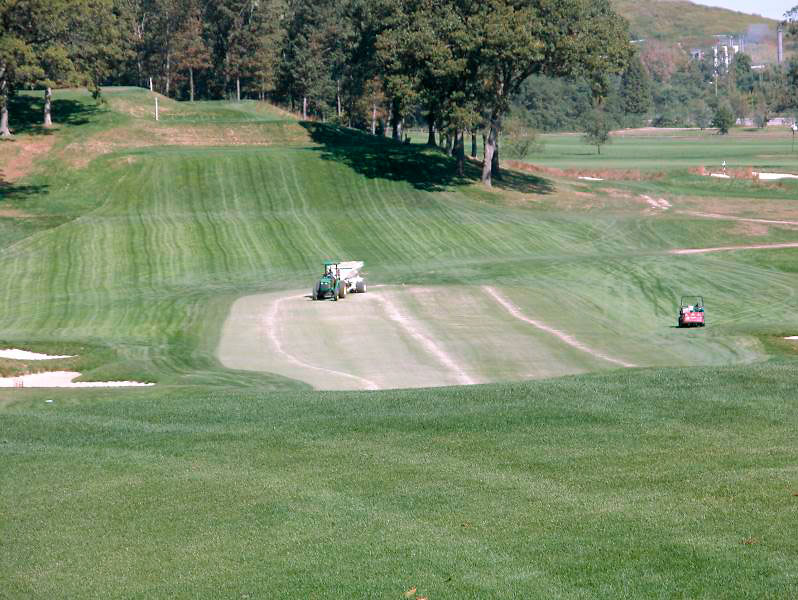
Although large scale sand topdressing operations can be costly, they aid in reducing runoff from soils with organic matter accumulation and heavy compaction. Source: Frank Rossi.

Sand topdressing helps provide high performance playing surfaces that also reduce the risk of runoff by increasing infiltration, reducing compaction, and diluting organic matter. Source: Frank Rossi.
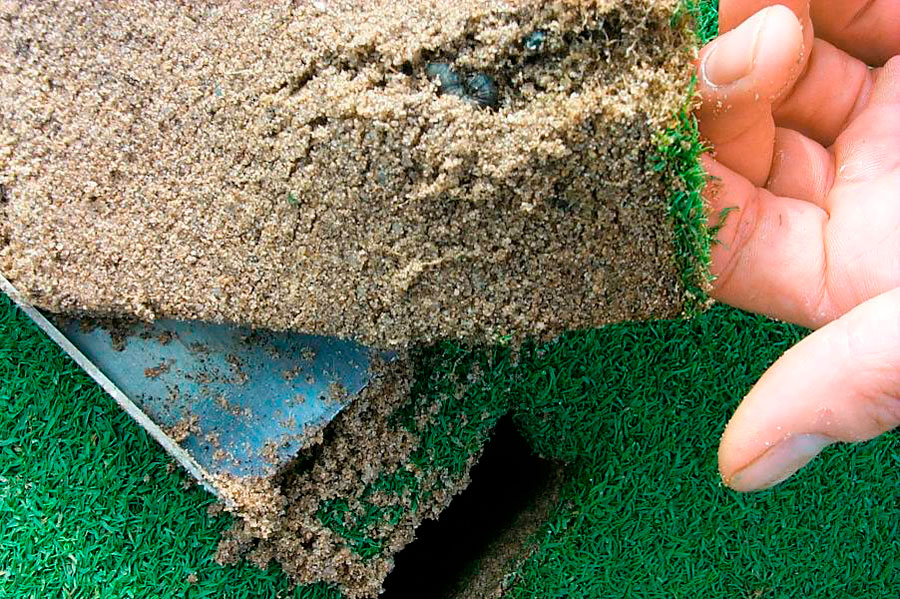
Sand-based greens offer the best options for maximizing performance and minimizing water quality issues. Source: Frank Rossi.
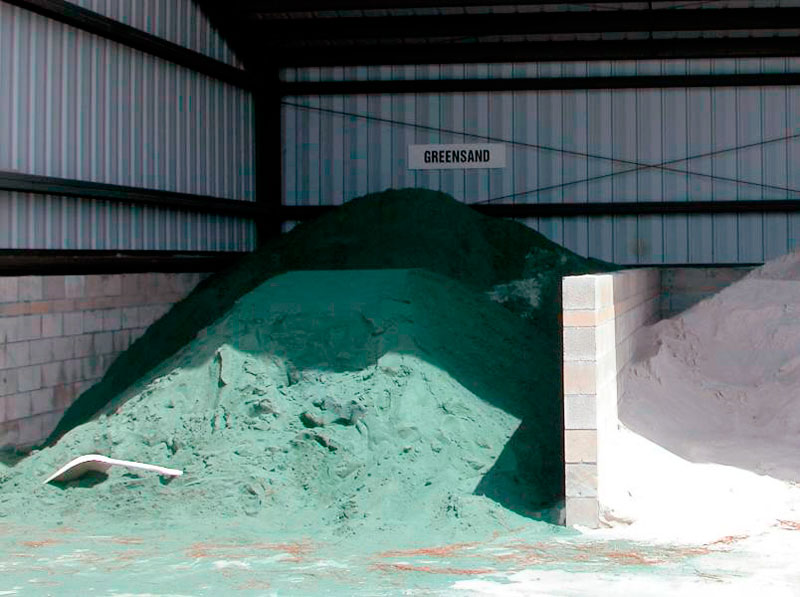
Proper topdressing material selection and storage are vital for maintaining a permeable turf surface. Source: Frank Rossi.
